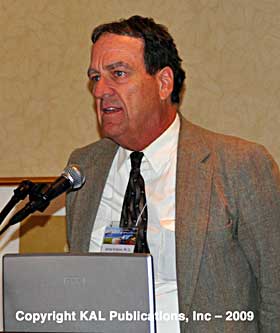An example of good science is the Internet. It's been called the greatest advance in communication since the printing press. I believe that. It is fast, inexpensive, and comprehensive.
Mary Dolores Nichols is the chairman of CARB. She heads an agency with 1,300 employees. She is an activist lawyer. She is backed up by legislators. Dissenting scientists are ignored and are never funded. Consequently, California truckers, contractors, and the economy are hurt very badly.

In 1983, a bill was passed by prominent legislators. This resulted in legislation that became part of the California Health and Safety Code. It set up a nine member Scientific Review Panel on Toxic Air Contaminants to serve a three year term.
[Members of the panel have been serving for over 20 years].
In 1998, the CARB meeting was so contentious that 66 legislators at the time were there protesting the action declaring diesel exhaust to be a toxic air contaminant. A month later, CARB declared diesel particulate matter as a toxic air contaminant.
CARB does not currently have legal authority from the U.S. EPA to regulate diesel engines below 175 HP which are used in the majority of off-road vehicles.
My involvement got intense starting a year ago. A draft report came out a year ago regarding a draft CARB report on PM 2.5 and premature deaths by Hien T. Tran. I testified against it and submitted testimony. In April 2009, CARB released a "Notice of Adverse Action" regarding the fabricated Ph.D. degree of Hien T. Tran, who was the lead scientist in the process.
In December 2005, I published my paper "Inhalation Toxicology." It showed there was basically zero effect on the association of particulate matter to mortality.
At the beginning of this month, another report comes out that organized the data starting with 1982. They use these small numbers and there are tiny, tiny effects. When the confidence interval crosses one, that means they can't find enough of a change to get rid of the accuracy of their measurements. It means, essentially, that they haven't found anything. And that's exactly what they found.
"Particulate Mass Fallacy" by Robert Phalen, Ph.D., U.C. Irvine, says 'In Southern California, which has a dry climate, resuspended soil contributes a larger fraction of mass to PM 2.5 than is seen in more damp regions of the U.S. ...Until the science progresses, it seems premature to press for tighter standards for PM 2.5.'
You would never know that any of this discussion that I'm engaging in was part of the record.
There is no relationship between PM 2.5 and life expectancy in any of the 11 counties in California for which I have data. I submitted this data to CARB. I submitted it directly to CARB members and their staff. They ignored all of this. What did they do? They issued a press release emphasizing the dangers of fine particulate air pollution.
It turns out that California is the fourth from the lowest for age-adjusted total death rate in all of the United States. The only states that are lower are Hawaii, primarily because of its Asian population, and Minnesota and North Dakota, primarily because of their Swedish population.
How do you combat this? You must prepare an understandable summary of CARB diesel science and regulations.
Focus on:I think the bad science that CARB is doing will wind up with the same results as what happened with Trofim Lysenko's pseudoscience in the Soviet Union.
We're ready, willing, and able to contribute whatever we can. I think this is the perfect time given the state of the economy in California. Legislators have to re-evaluate what is happening. And they may be willing to re-evaluate this agency which is using 1% of the resources that are coming into the state.
Use the Internet — honest science — to spread the word around.
CARB's budget is $650 million per year. That's a lot of money to be up against every year.
Go to your Legislator. Let them read over the documents. They knew this was going to be a controversial panel. They put precise ending dates on the terms of the Board. They swept it under the rug for decades. You need to understand this and talk to the legislators. The ones I have talked to have been listening. They're not aware of this. This stuff is just not out there. They're learning. They're going to relate this to the unemployment situation. They want California to survive, too. They're ready and willing to help the state survive.
Trade magazine publishing featuring a “hometown paper” approach to industry news, events, and the people who make it all happen.